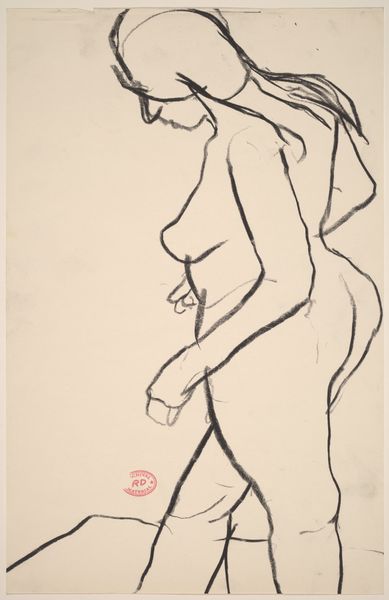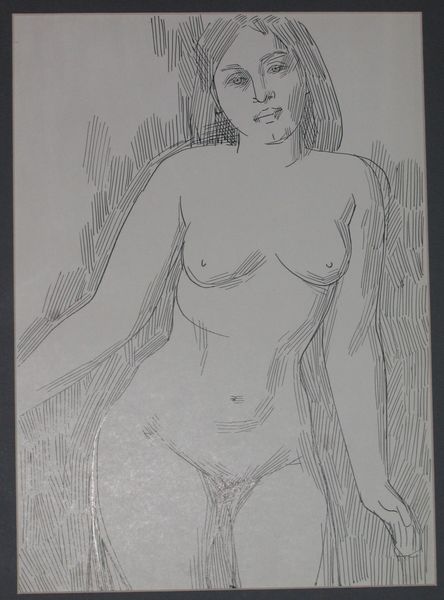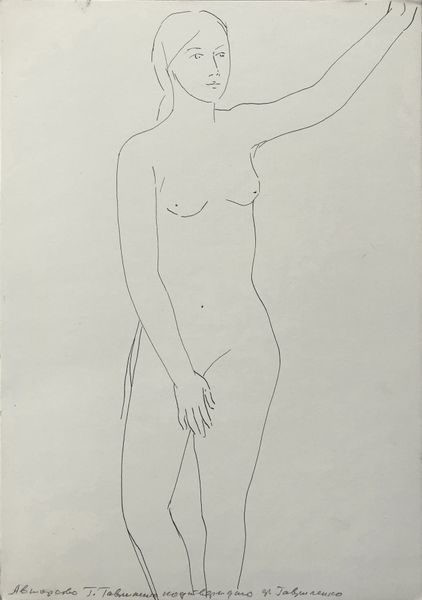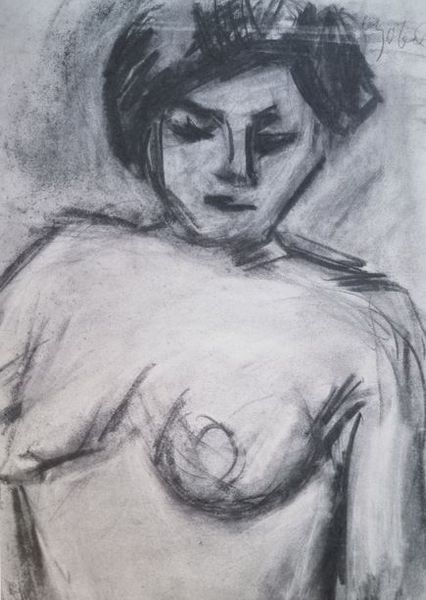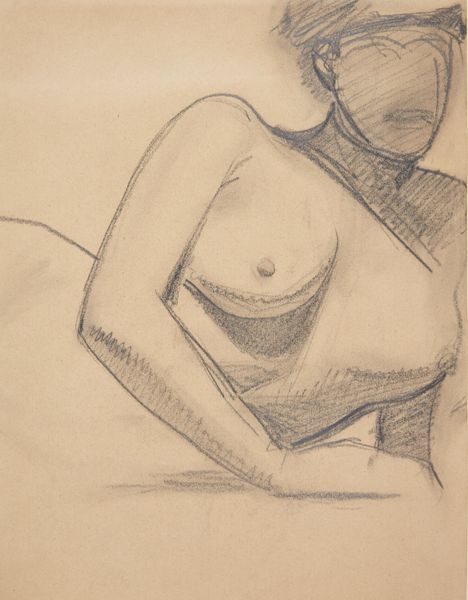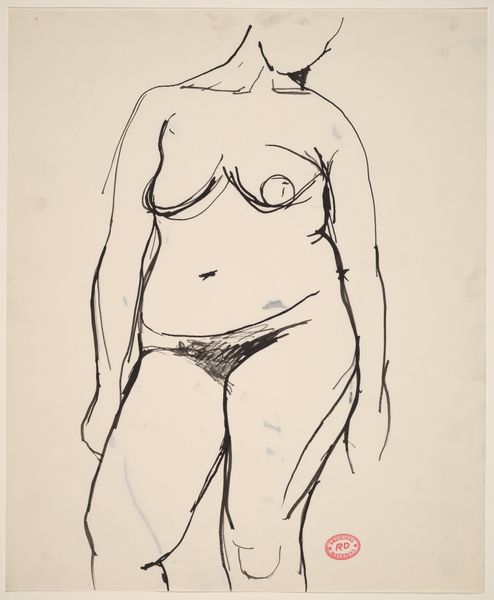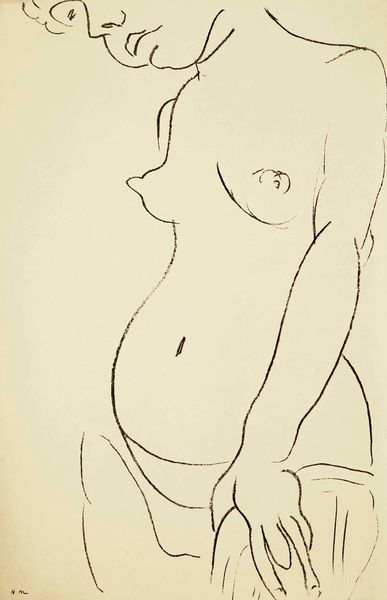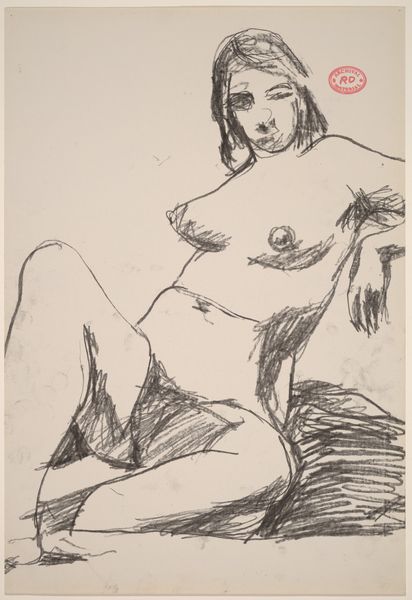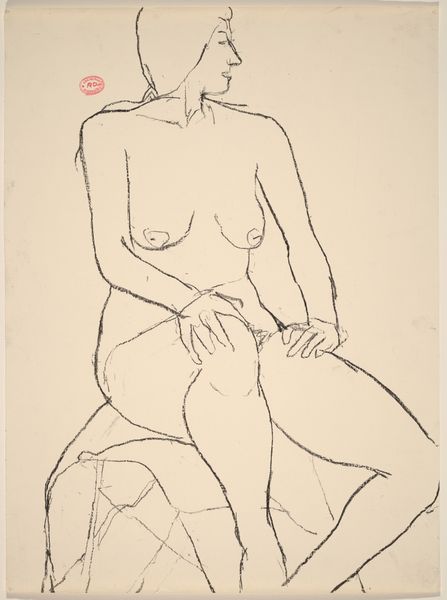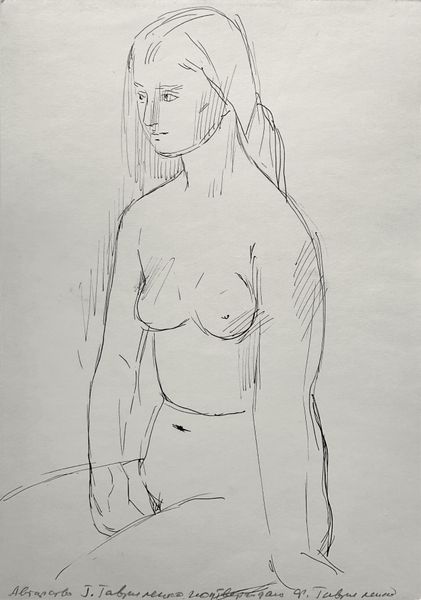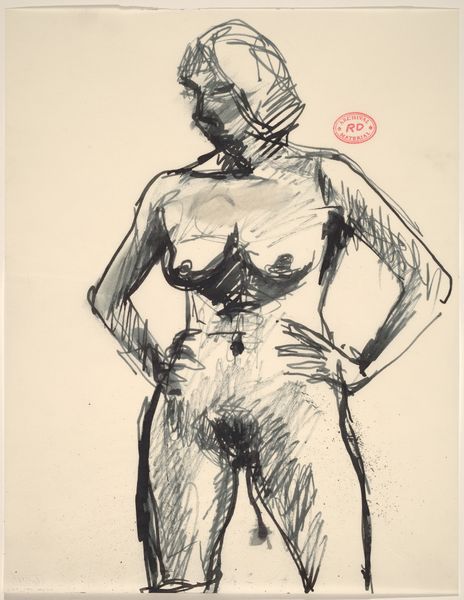
drawing, charcoal
#
drawing
#
figuration
#
charcoal
#
nude
Copyright: Bela Czobel,Fair Use
Editor: Here we have Bela Czóbel's charcoal drawing, "Female Nude". It's difficult to put a precise date on it. The loose charcoal lines create a really raw, almost vulnerable mood for me. What’s your take on it? Curator: The raw energy definitely connects to its socio-political context. Remember, Czóbel was active during a time of great upheaval, bouncing around places like Paris and Berlin. How do you think this historical background shaped his artistic choices in portraying the female form? Editor: Well, considering the traditional academic nudes, this seems so much less idealized, more immediate. It feels like a direct response to the established art world. Curator: Precisely. The institutional standards prized polished depictions of the female body. By employing this stark, expressive style, Czóbel directly challenged those norms, pushing the boundaries of what was considered acceptable and ‘beautiful’ in art. Notice also that its public role would have been limited, not commissioned. Editor: It's amazing to see how an artist can use their work to question and subvert societal expectations, especially concerning something as loaded as the female nude. Curator: Absolutely, and Czóbel's choice of charcoal itself speaks to this. Charcoal is less precious, less controlled than oil paint; in this period it becomes a tool for exploring these raw themes with authenticity. It also makes this drawing a quick medium in which to catch immediate thoughts and feeling of the time. Editor: So it becomes part of the artistic statement itself! I’ve learned a lot by thinking about this piece through the lens of art institutions and socio-political tensions. Curator: Indeed. By looking beyond just the aesthetic, we uncover the powerful dialogue art has with its world.
Comments
No comments
Be the first to comment and join the conversation on the ultimate creative platform.
